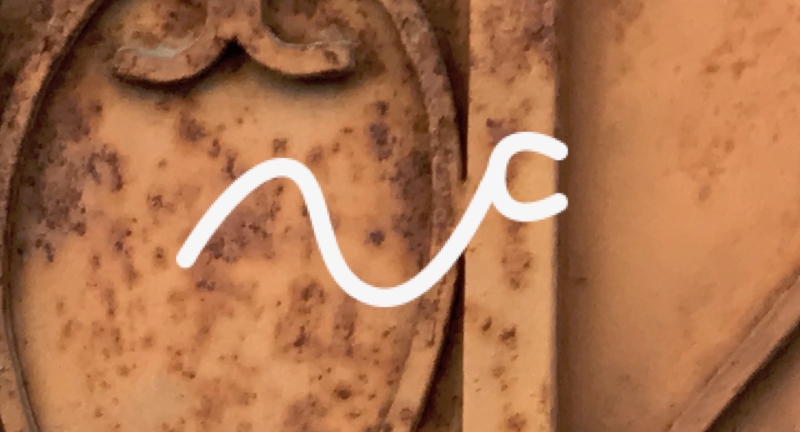There’s always something juicy in Blackbox M, so I return to be beguiled. Here are my favourites from Issue 21.
In Kimberley Campanello’s work, most of the otherwise white pages each contain a small block of justified text and, within that block or somewhere else on the page, the name of a child with a date and a figure in months of their age at death, which takes place in the 1930’s and 1940’s. The text is paratactical but immediately commands attention as significant with its tone of fragmented reportage. It establishes a sense of haunting both in content and form, beginning with a ‘so-called playground’ in which those same words are overlaid to create a palimpsestic blur, in what seems to articulate a sense of words being said over and over again – an attempt through repetition to exorcise grief, or a sense of media representation harking on elements that can’t be simply absorbed. Children are absent from this place but there are signs everywhere of that absence, of a diminishment which in disappearing poignantly refuses to disappear, as when we read ‘very likely they / were collected and taken away paper dolls’. The place is toxic too, ‘it was a sewage area’; although fittingly it’s unclear whether this is before, during or after the events alluded to. It is a debasement which binds up in itself the idea of a failure of wider societal responsibility, the very idea of being bound up:
widened beyond not-too-distant
collective past the fallout even
remotely related
Here, ‘fallout’ suggests not only contamination but the fallout as a media and political event, the falling out of a community. This happens in both the proximity of relation and the remoteness that can be closure or indifference, but may also be a sense of infinite failure to grieve sufficiently. I’ve deliberately written this to relay my initial experience of reading, but it turns out to be part of a much longer work with a specific historical referent. I’ve ranted elsewhere on the abject, abstract failure of Berlin’s monuments to Jews – this seems a far more moving, inflected way to address questions of mourning and culpability. I’m looking forward to finding and reading more of this piece, and of Campanello’s work in general, which is new to me.
Daniel Eltringham, whose work I’m more familiar with, shares with Campanello that quiet but affecting subtlety – it’s a feature of his reading style too, most recently at Xing the Line in December 2018 (which included a performance of this poem). His focus is ecological, in its widest sense, an attempt to engage with what creatures we are or have to be now in the face of the Anthrobscene. ‘Five a Week’ deserves longer treatment than I’ll be able to give it here, wrestling as it does with these massive questions.
What struck me on first hearing, and still strikes me, is the creation of a very conversational and situated idiom. It plays cleverly against the anti-egoic nostrums of a more inflexible experimentalism by placing the reflective individual in a context of chats with friends, rendered very affectionately, creating a decentring which is mundane in the very best sense. There’s a recognition that these won’t of themselves solve the world’s problems, but it seems a political move to the idea of the local and collective, of a practical polyphony. There are astute, wry, joyful moments but there is fight, too, here beginning with an echo of Prynne’s ‘The Numbers’:
Yet the problem pertains
to shrink the footprint down
means absolutely to be grounded,
deny lift-off to shrink the world
down & I don’t / produced by the ideology
of connection – no borders, that’s obvious –
but can we self-impose some stay home,
sit tight, illimit.
To ‘sit tight’ as a means of ‘illimit’ resonates more broadly than in its environmental aspect – to the sense of finding meaning but also resistance in the smallest thing or action, in being collectively ‘tight’ with those around one, in this very generous poem.
Others I enjoyed but must be briefer with: Calum Hazell delights still with nifty bewildering leaps and subversions, creating a totally strange poem-behaviour as his ‘apotropaics’ seek ‘to remodel the scuttle-, fuck-, and song-behaviours of choice quadrupeds and birds.’ Hazell merits a full treatment somewhere else – it is a New Year’s resolution of mine – but I’m building up cardiovascular fitness first.
Catherine Vidler’s ‘Collected Spruce responses, Part 2*’ is a response to Tom Jenks’s Spruce. It follows the same structure of 9 line poems divided into tercets, and like Jenks, it can be enjoyed for a sense of hanging loose: a voluptuous surrealist discombobulation.
I saw a brush turkey descending the stairs
in search of a less intense relationship
determined to sleep in the variable heather
Somehow though, and maybe that’s the ‘response’, with Vidler one feels the presence of something more conflictual: of the ‘chit-chat nest and its hatched despair / like a queasy plea at the ascetic threshold’ or ‘yet another mirage by the parched bedside’. It reaches deeply through the vivid to the rooted.
Tessa Bering and Kathrine Sowerby open up this issue with a couple of tremendous poems, which read like a feminist response to Eliot’s ‘J. Alfred Prufrock’: there’s a flighty, funny ownership of hysterical voices, one of which is given to interjecting ‘Comma! Apostrophe! Comma!’ and suchlike, a living and coming apart at the seams in contemporary domestic and day-to-day settings.
Jonathan Catherall







